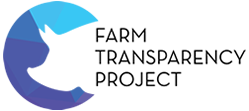News & Media > Media Releases and Statements > Submission to the Inquiry Into the Impact of Animal Rights Activism on Victorian Agriculture
Submission to the Inquiry Into the Impact of Animal Rights Activism on Victorian Agriculture
Submitted 2 August 2019
Prepared by Chris Delforce
Executive Director
Aussie Farms Incorporated
ABOUT AUSSIE FARMS INC
Aussie Farms is a non-profit, ACNC-registered animal rights charity, dedicating to ending commercialised animal abuse and exploitation in Australian animal agriculture facilities by increasing industry transparency and educating the public about modern farming and slaughtering practices.
Aussie Farms operates under the belief that most Australians are good, caring, decent people who are opposed to animal cruelty. Industries that use animals for commercial gain operate in almost total secrecy, and exploit this decency through marketing ploys such as "humanely slaughtered", “ethically raised”, and "free range", utilising imagery depicting happy animals living out their days on rolling green hills in the sunshine, while actively seeking to limit awareness of the routine cruelty inside farms, slaughterhouses and other related facilities.
By breaking down this secrecy and making it easier for consumers to see the truth about what their purchases support, the commercialised abuse and exploitation of animals will slowly but surely come to an end. We believe that information - freely and readily accessible - is our greatest and most powerful tool.
It is to this end that we released in 2018 the feature-length documentary Dominion, an exploration of what modern, legal, standard-practice animal farming and slaughtering looks like in Australia, one of the most comprehensive resources available to consumers seeking to increase their knowledge of the subject.
Similarly, in early 2019 we released a map identifying the locations of farms, slaughterhouses and other animal exploitation facilities across Australia, complementing an existing catalogue of thousands of images and videos. This resource allows consumers for the first time to see the scale of industrial animal farming on both the micro and macro levels, grounding in reality the previously somewhat mythical concepts of factory farms and slaughterhouses. For many Australians, even this satellite imagery depicting a typical farm with numerous enormous sheds, or barren feedlots with tens of thousands of cattle, is a shock compared to the ‘Old Macdonald’ style farm presented by the industry and reinforced throughout their childhood.
Repeatedly, we have seen these resources enable consumers to have informed conversations about the ethical, environmental and health detriments of animal agriculture, and to make kinder choices that align with their own ethics.
Type And Prevalence of Unauthorised Activity on Victorian Farms and Related Industries
Documenting and exposing cruelty
Without the work of activists, none of the following atrocities would be known to the public, as it is not at all in the best interests of the offending businesses or government agricultural bodies to expose such practices themselves:
- Live-baiting in the greyhound racing industry, including in Victorian properties
- Live export
- The maceration (blending) of live male chicks in the egg industry, because they won’t ever be able to lay eggs (figure 1-2) – captured at a Victorian facility
- The slaughter of five-day-old male calves (award-winning Tasmanian facility, Victorian facility) in the dairy industry because they won’t ever be able to produce milk, and female calves who are in excess of the farm’s needs. This follows the forced separation from their mothers just hours after birth; the mothers are known to grieve for days or even weeks. The mothers are repeatedly and forcefully impregnated, as like humans they do not lactate without giving birth.
- The use of excruciating carbon dioxide gas chambers in all major pig slaughterhouses (figure 3) including several in Victoria (Benalla, Diamond Valley Pork, Australian Food Group), previously touted by the industry as ‘humane’, and also for the killing of ‘unviable’ chicks in the broiler (meat) chicken industry (Victorian facility) (figure 4), and ‘spent’ hens in the egg industry whose egg-laying has slowed (Victorian facility)
- Repeated failure of stunning methods at numerous slaughterhouses (Victorian example: ducks regularly slaughtered fully conscious at Luvaduck slaughterhouse; South Australian example: poor electric stunning of pigs and subsequent death by drowning in the scalding tank)
- Routine and extended confinement in battery cages, sow stalls, farrowing crates (figures 5-8), including in Victorian facilities
- Routine mutilation of young piglets, lambs, goats, calves and chicks, without anaesthetic or pain relief, including in Victorian facilities
- Rapid growth of broiler chickens and turkeys (figure 9) as a result of selective breeding, lack of exercise due to overcrowding (figure 10), artificial lighting and the heavy use of antibiotics which enhance feed absorption
- Farming of ducks without access to surface water, causing a wide array of health issues – captured at a Victorian facility
- An illegal slaughterhouse in Victoria killing sheep without any kind of stunning (figure 11)
In all of these cases except for live export, this evidence has been obtained as a result of trespass by activists who are aware that they are breaking the law, but adamant in the belief that the Australian public, and specifically consumers of meat, dairy, eggs and other animal products, deserve to know what they’re paying for.
The footage has in several cases caused widespread public outrage, with the chick maceration and pig gassing footage each seen by over 10 million people worldwide and recent footage of violent treatment and gassing during ‘depopulation’ at Victorian egg farms making national headlines.
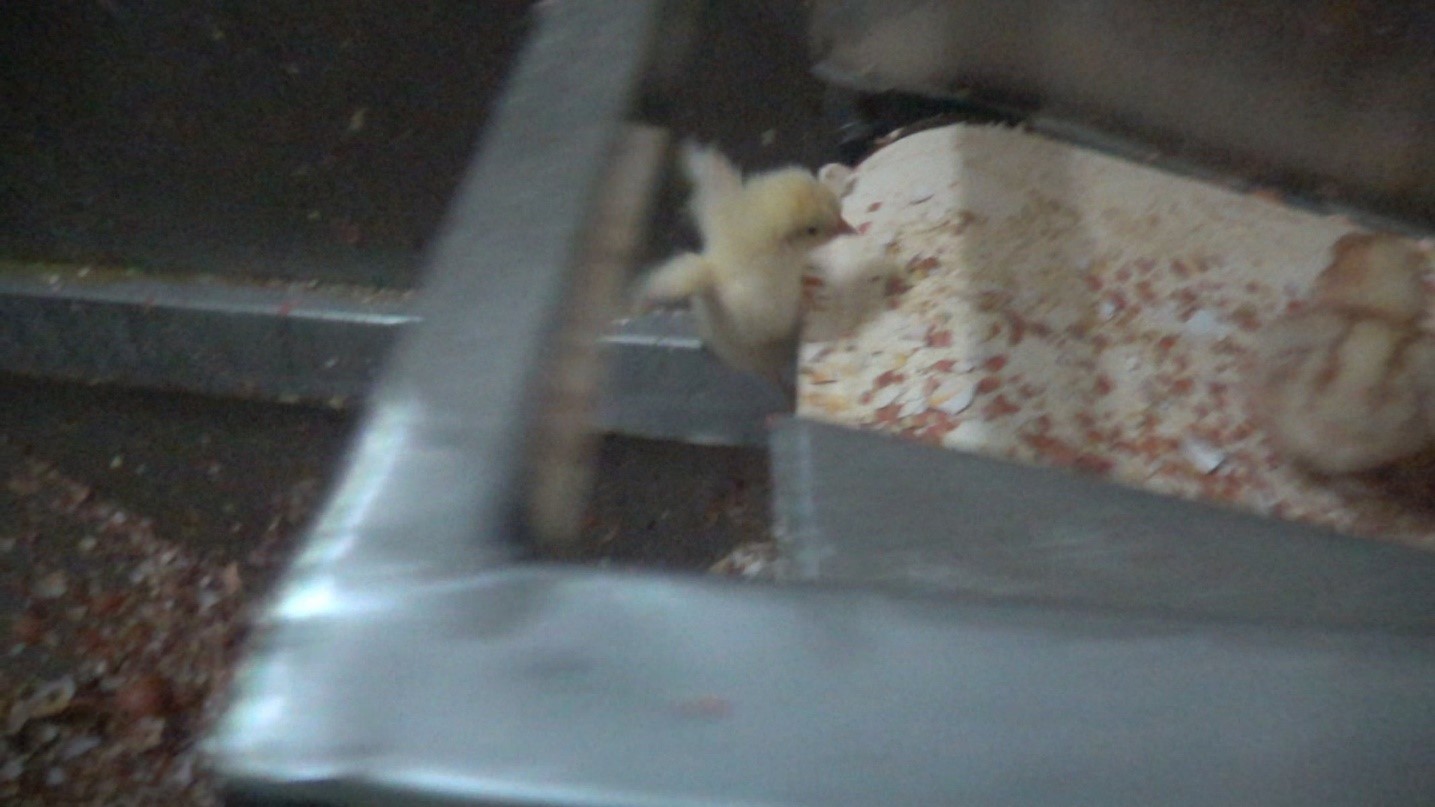
Figure 1: Maceration of male chicks
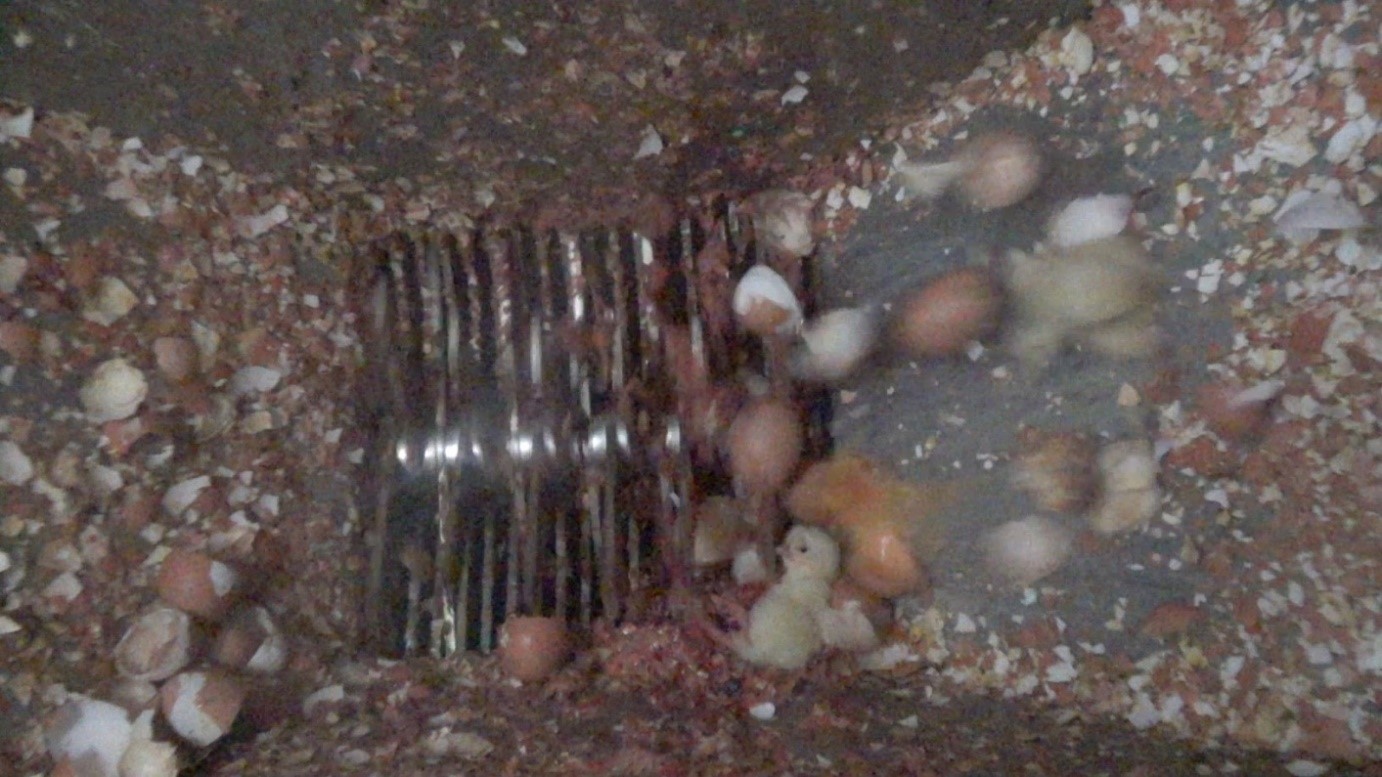
Figure 2: Maceration of male chicks
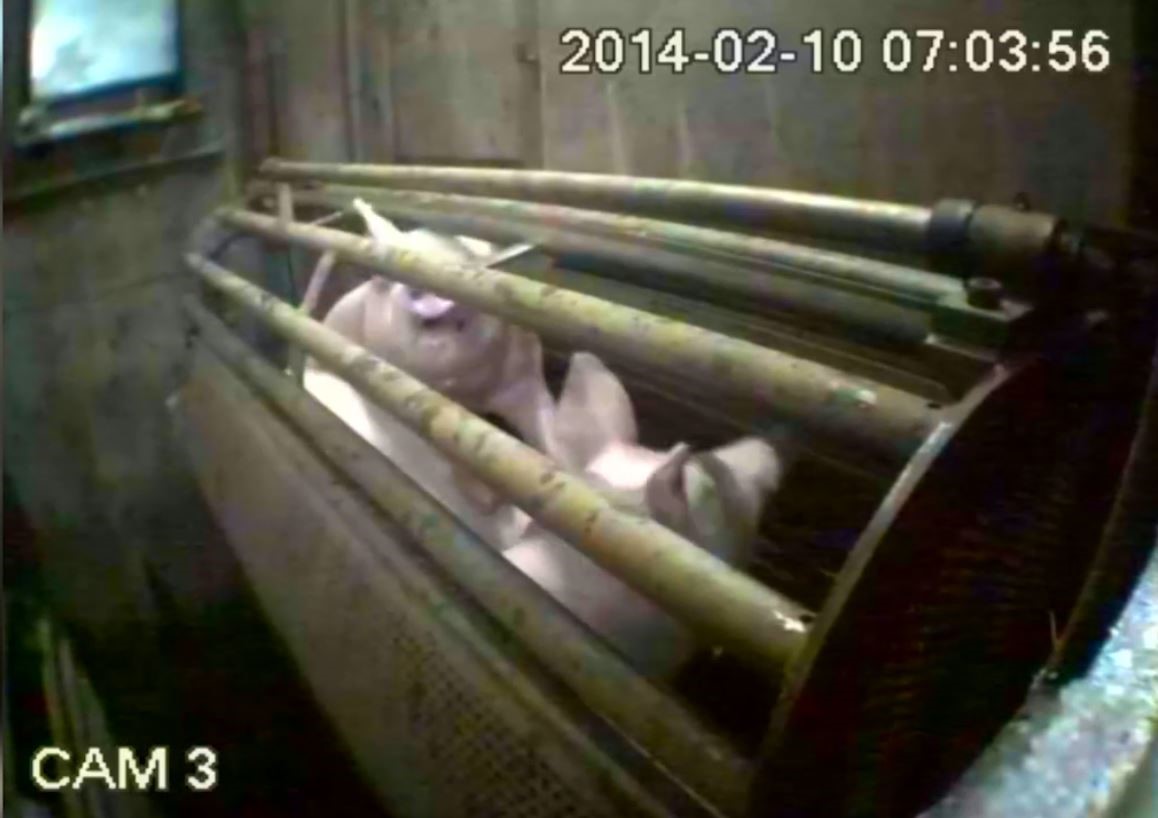
Figure 3: Carbon dioxide gas chambers for pigs
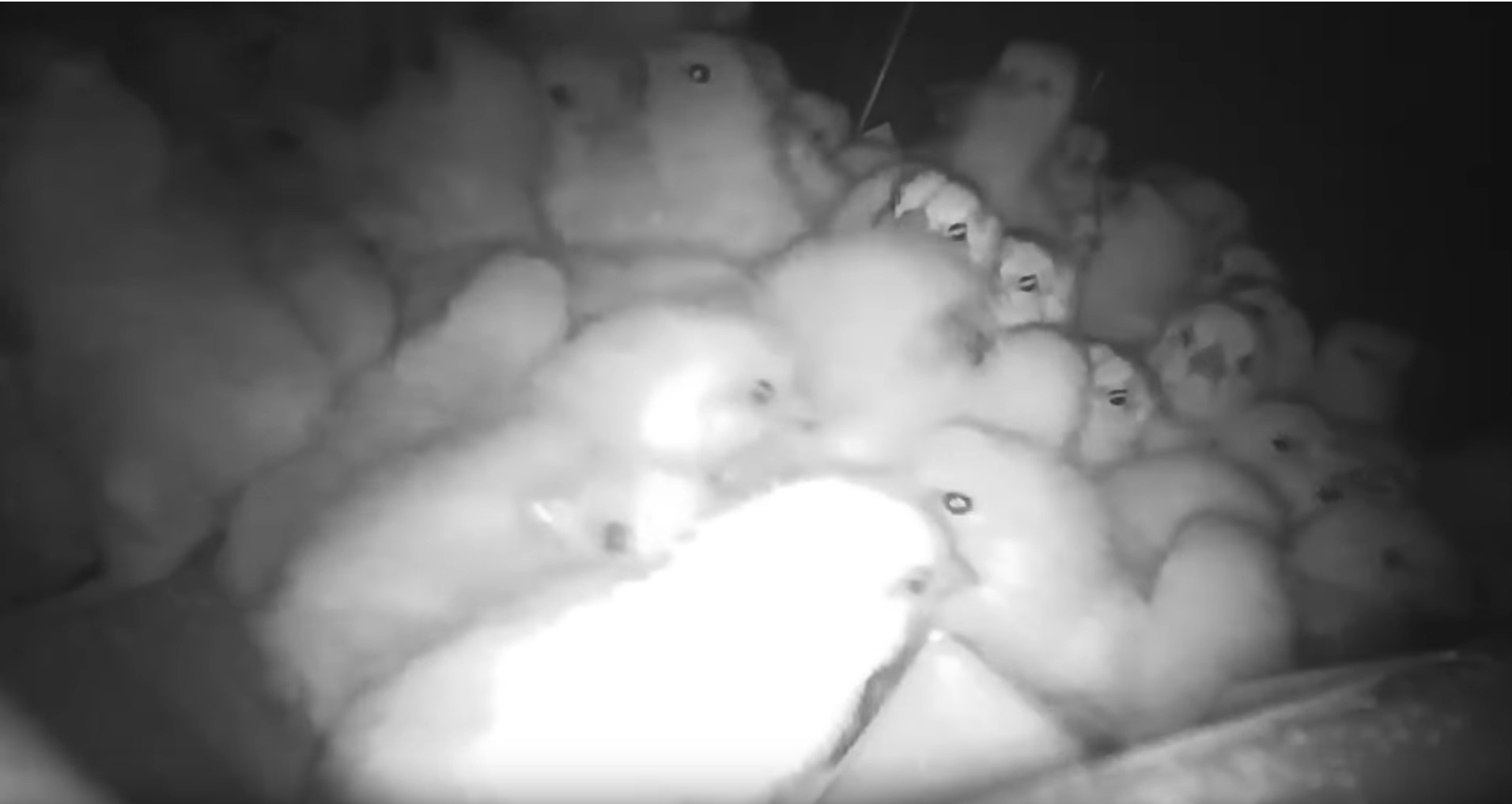
Figure 4: Carbon dioxide gas chambers for broiler chickens
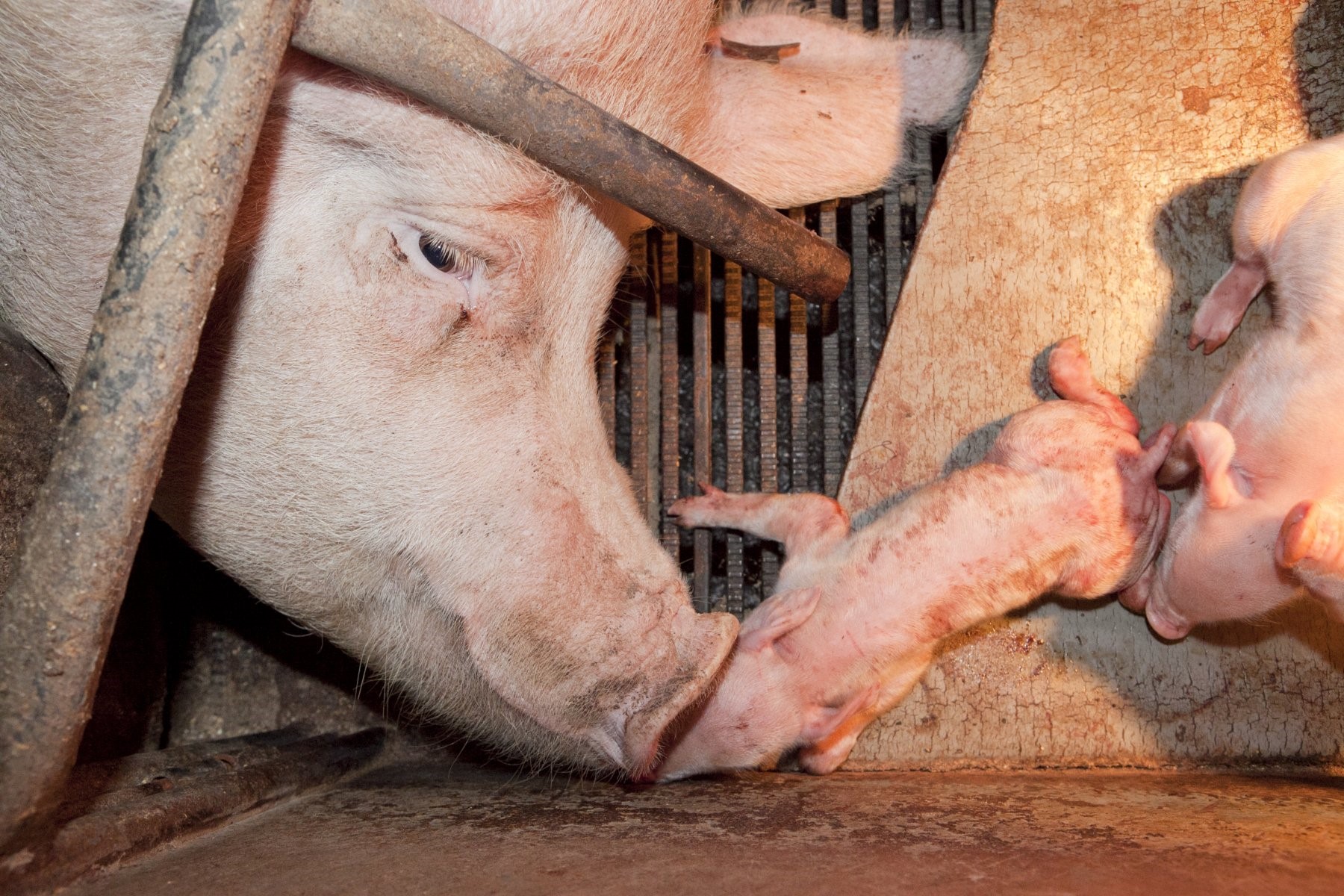
Figure 5: Sow and piglets in farrowing crate
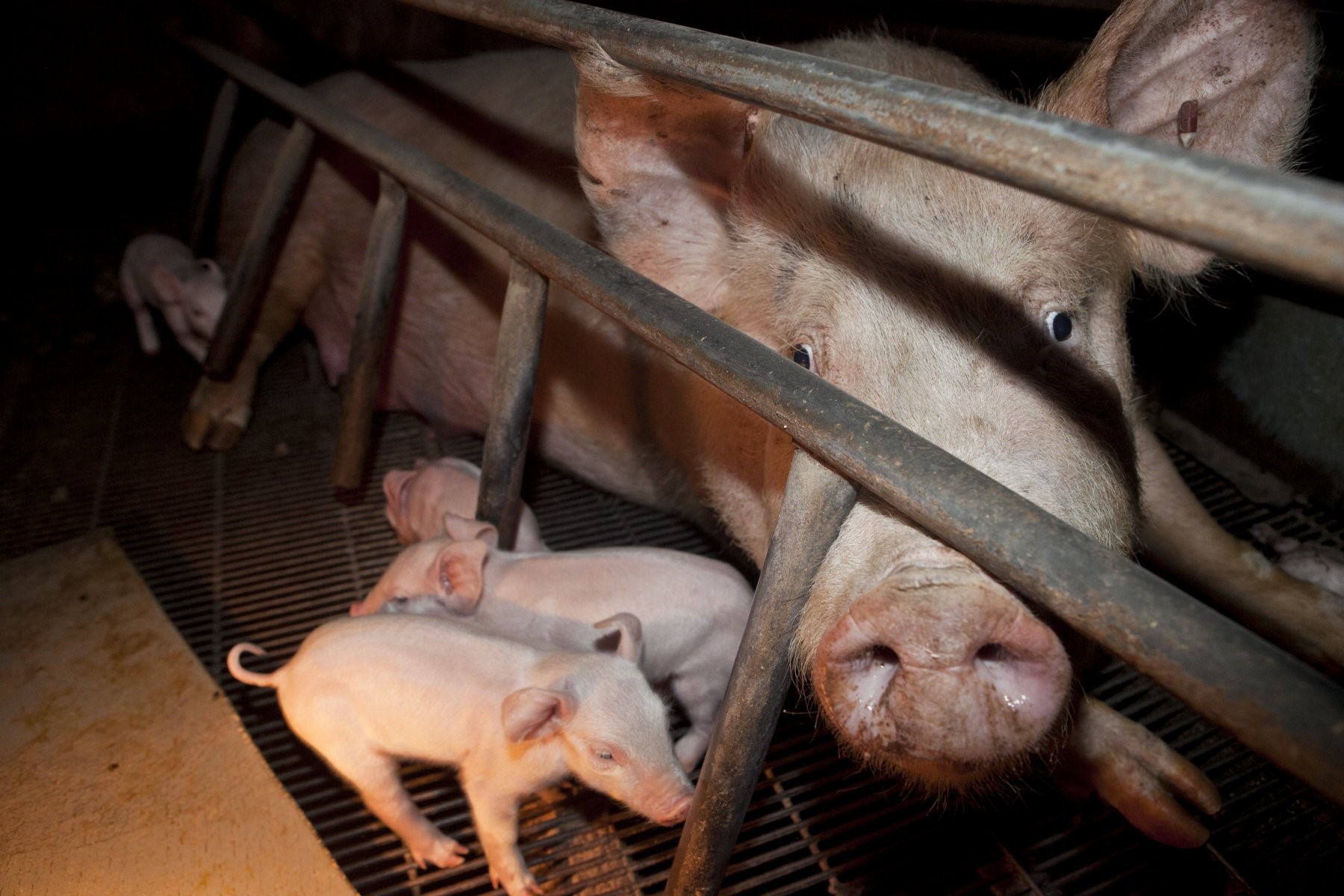
Figure 6: Sow and piglets in farrowing crate
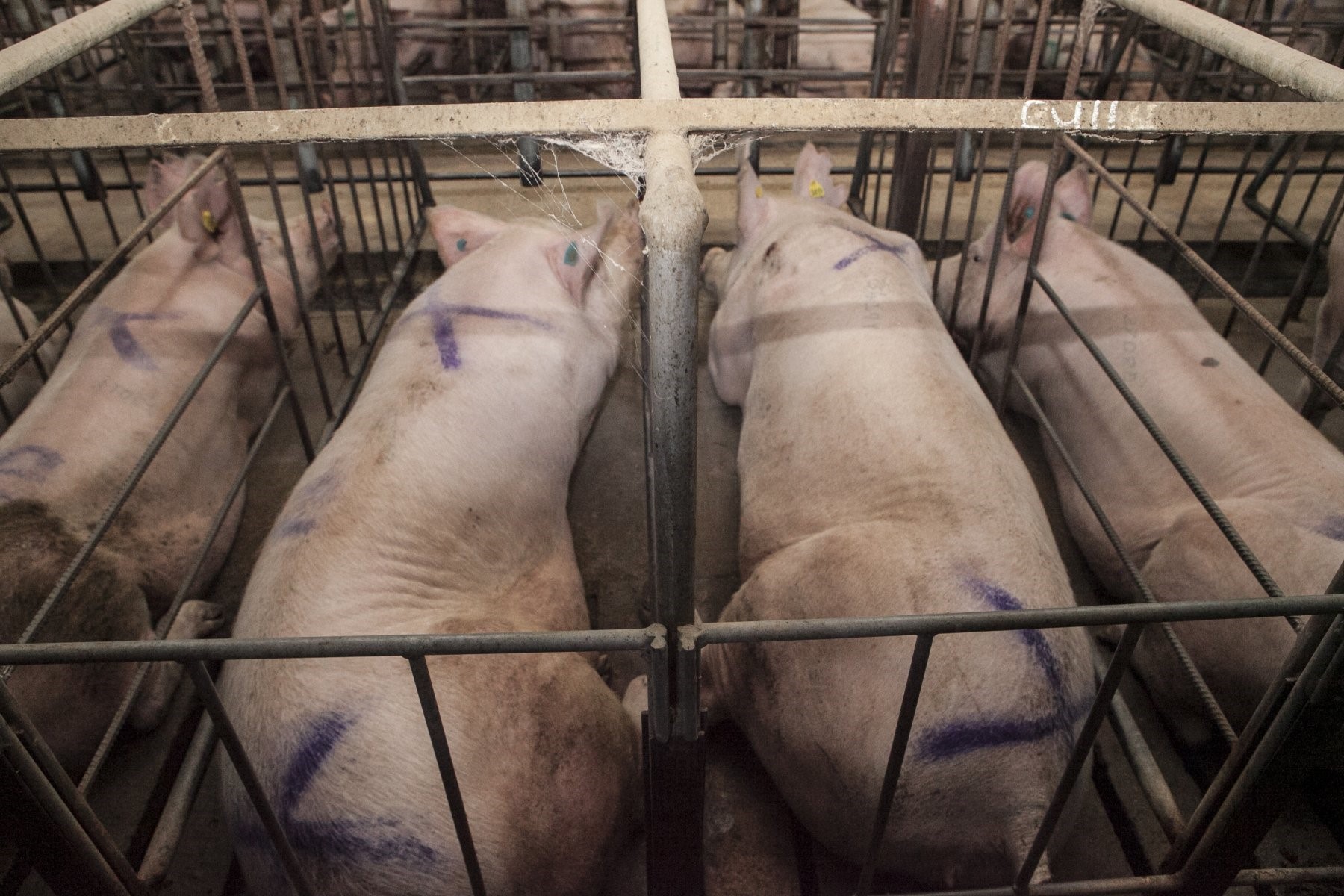
Figure 7: Sows in sow stalls
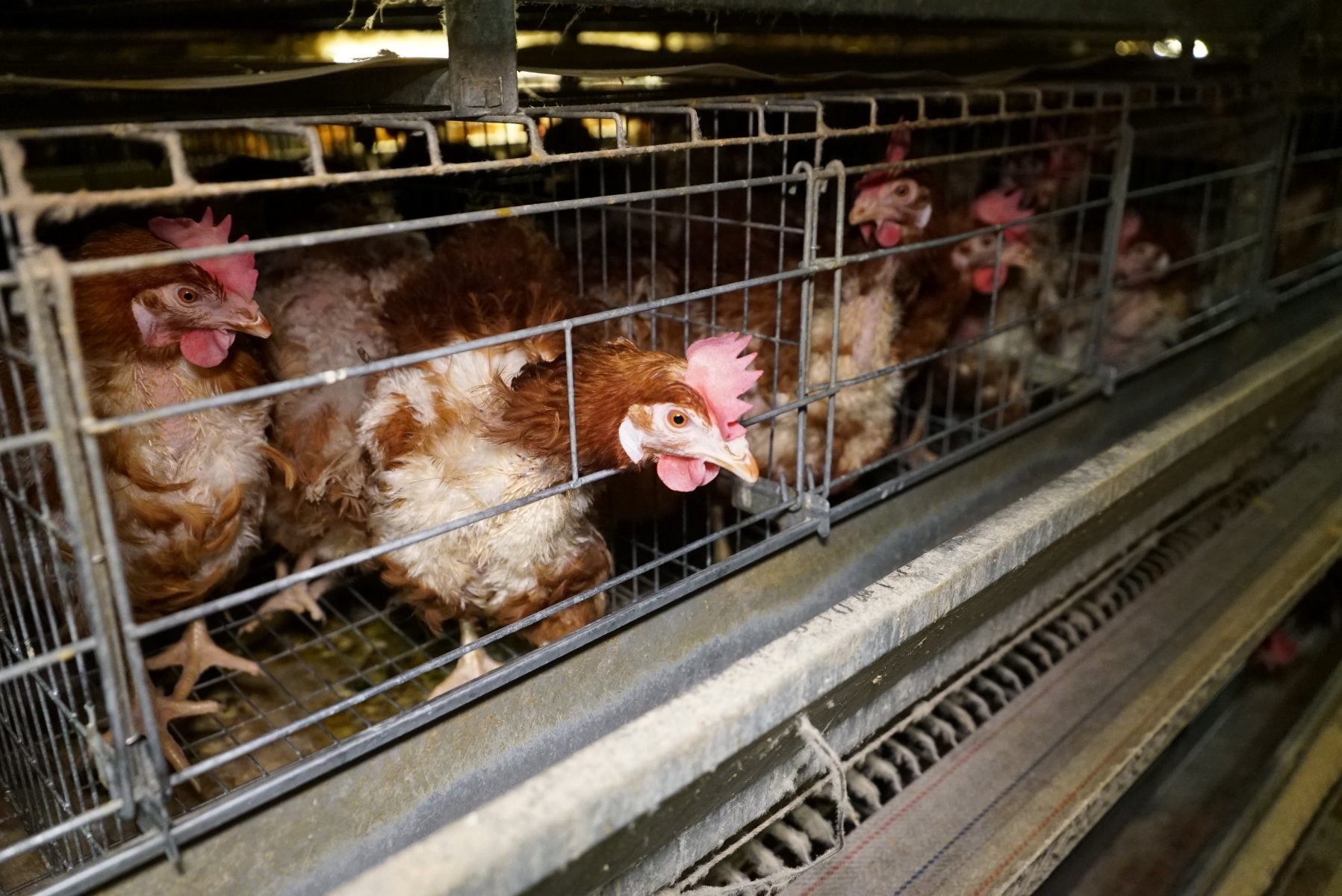
Figure 8: Hens in battery cages
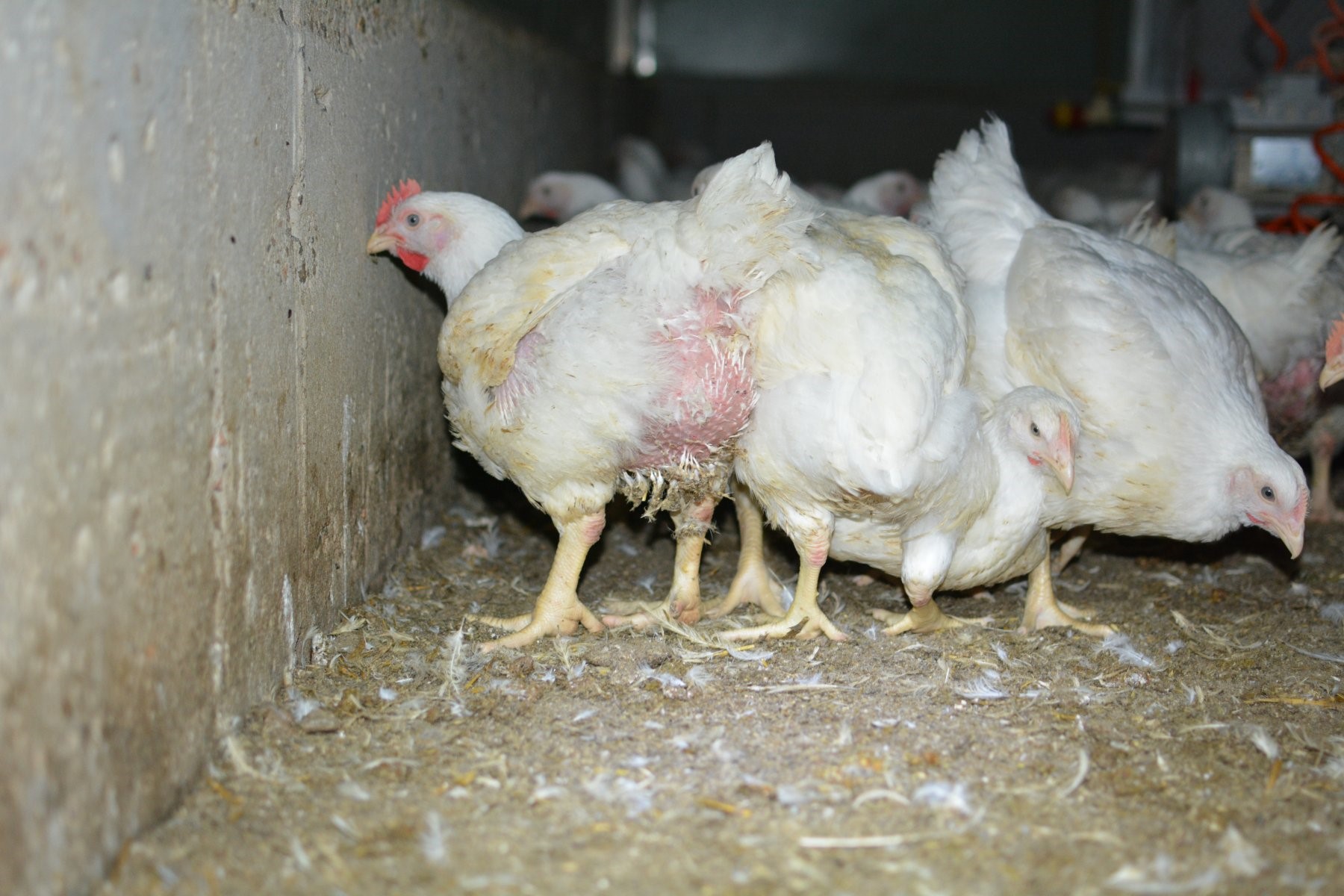
Figure 9: Unnaturally large broiler chickens
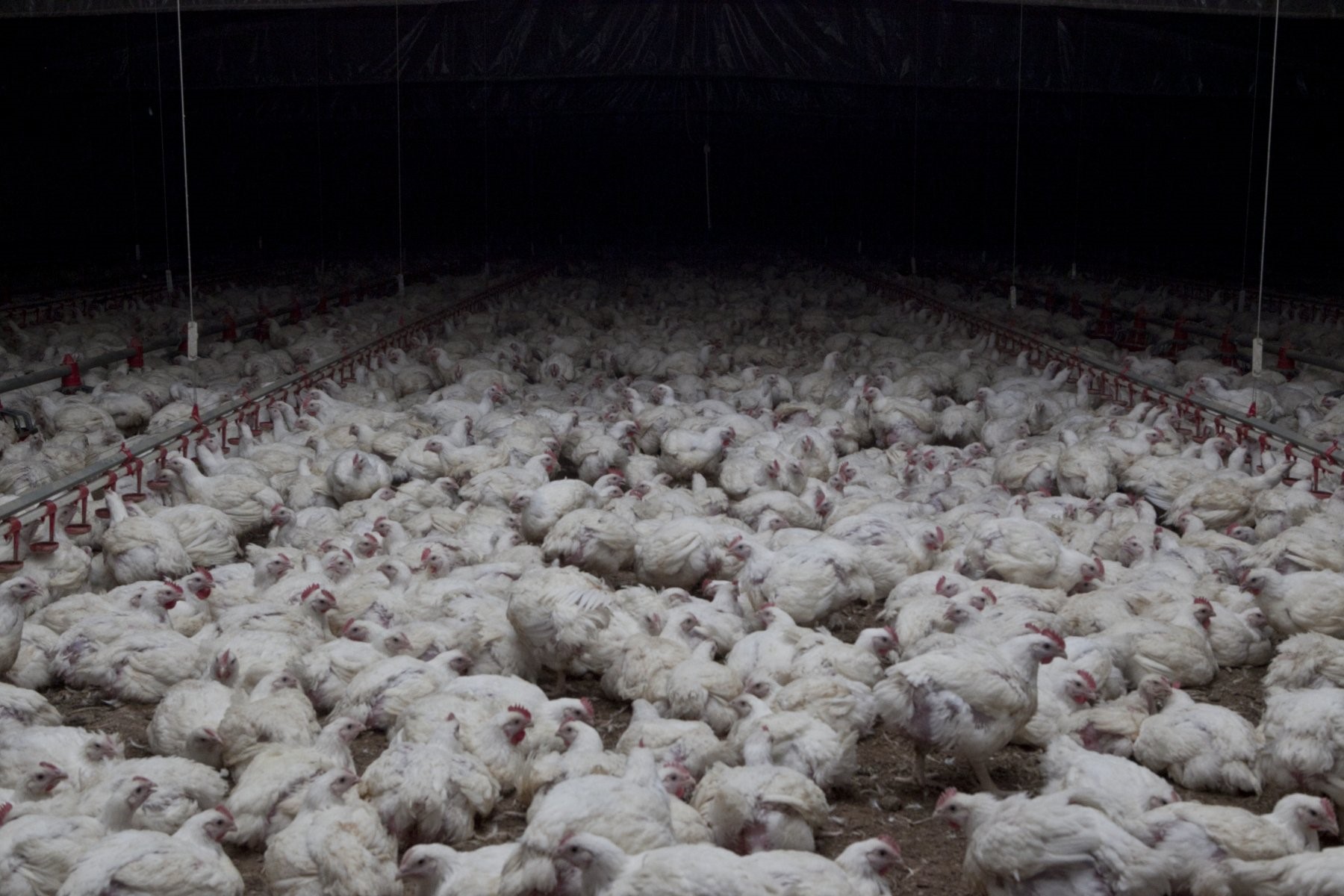
Figure 10: Overcrowding in broiler sheds
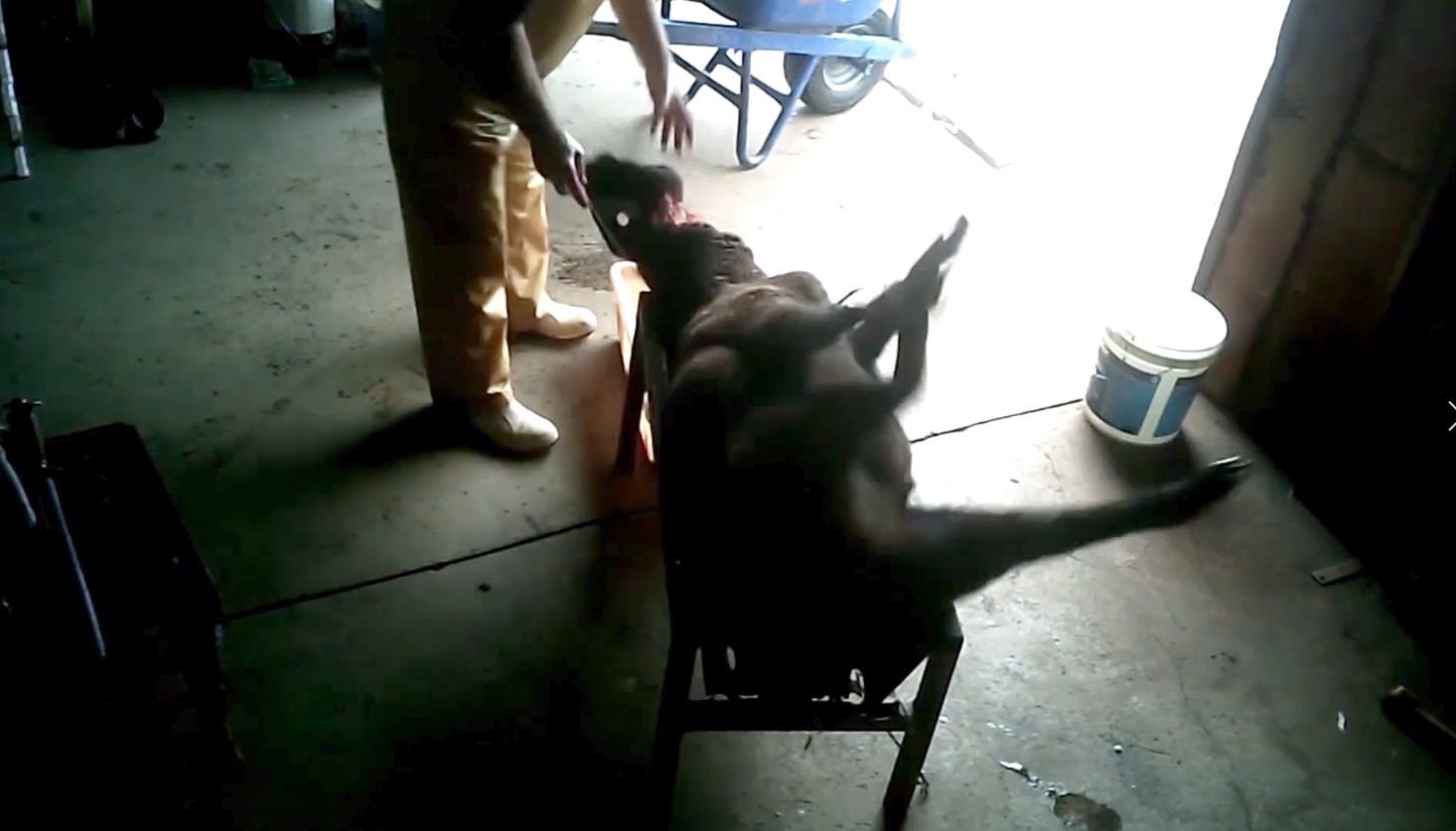
Figure 11: Illegal slaughterhouse in Koo Wee Rup, Victoria
Rescuing animals
All animals bred into commercial farms are destined for slaughter at a fraction of their natural lifespan:
|
Typical Slaughter Age |
Natural Life Span |
|
|
Chickens (male in egg industry) |
1 day |
Up to 8 years |
|
“Veal” calves |
1-24 weeks |
15-20 years |
|
Chickens (broilers / meat breeds) |
5-7 weeks |
Up to 8 years* |
|
Ducks |
7-8 weeks |
6-8 years |
|
Rabbits |
10-12 weeks |
8-12 years |
|
Goats |
12-20 weeks |
12-14 years |
|
Geese |
15-20 weeks |
8-15 years |
|
Turkeys |
4-5 months |
Up to 15 years* |
|
Pigs |
5-6 months |
10-12 years |
|
Lambs |
6-8 months |
12-14 years |
|
“Beef” cattle |
18 months |
15-20 years |
|
Chickens (egg laying hens) |
18 months |
Up to 8 years |
|
Pigs (breeding sows) |
3-5 years |
10-12 years |
|
Dairy cows |
4 years |
15-20 years |
* Most chickens and turkeys are bred to grow so fast that their bodies cannot endure very long. When not bred for consumption, chickens and turkeys can grow at a rate their bodies can sustain for many years.
This slaughter occurs regardless of how well or poorly they are treated during their time in the farm, and it is always a horrific experience – as footage has shown time and time again, there is always fear, pain and suffering, and often an awareness of what is to come, with many subjected to witnessing the deaths of those before them. Ultimately, these animals are viewed by those who breed, raise and send them to slaughter, as “property” and “stock”, no different to a television. The end goal is to make a profit; the welfare of the animals is only relevant to the extent necessary to meet this goal, and high mortality rates, especially at younger ages, are considered simply the cost of doing business.
Activists who trespass to remove these animals take them to sanctuaries where they are able to live out the rest of their natural lifespan, free from abuse, neglect or obligation, and looked after individually with veterinary care that is simply not possible for large-scale farms with thousands, tens of thousands, or hundreds of thousands, of animals per worker to provide.
Rescue must be distinguished from “theft” where animals or property are taken for financial or personal gain.
Protesting
Due to much of the evidence captured by activists depicting legal cruelty, it is usually impossible for authorities to take prosecutory action, and is often of little interest to mainstream media outlets which prefer to focus on illegal cruelty. As such, there have been occasions where activists have felt it necessary to accompany the footage with civil disobedience protest actions, in order for the footage to reach the general public who most need to see it.
Diamond Valley Pork example:
In 2015, four activists chained themselves inside the ‘race’ leading into the gas chamber at Victoria’s largest pig slaughterhouse, Diamond Valley Pork, where covertly obtained footage showed the excruciating effect of the gas on the pigs. The action led to widespread media coverage where the supposedly ‘humane’ stunning method was called into question, and also caused the RSPCA to change their stance of the practice and remove their public approval of the facility from Diamond Valley Pork’s website.
- Diamond Valley Pork Slaughterhouse protest: ‘They’re burning from the inside out’
- Animal rights activists chain themselves to pig slaughterhouse 'gas chamber' in Laverton
- Police remove animal activists protesting against pork abattoir's 'gas chamber'
- Animal Liberation Victoria claims pigs suffer horrific deaths when killed using carbon dioxide
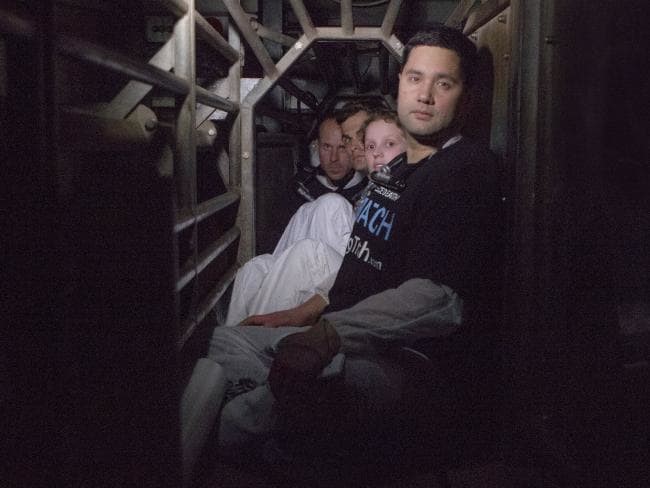
Workplace Health and Safety and Biosecurity Risks, Impacts of Animal Activist Activity to Victoria’s Economy and International Reputation
BIOSECURITY
There has not been a single incident of a biosecurity hazard caused by activists, despite hundreds of investigations into farms and slaughterhouses by activists over the last 40+ years.
Factory farms are not biosecure environments. They are in almost all cases, plagued by rats, mice, birds, cats, mosquitoes, cockroaches, and all manner of disease-carrying animals, who freely come and go through open doors and windows or decaying walls. An outbreak of avian influenza at a Young NSW free range egg farm in 2013, believed to be contracted from wild ducks, spread to a nearby caged facility and led to the culling of over 400,000 farmed hens. It then also spread to a second caged egg farm.
With farms containing hundreds of thousands, sometimes millions, of animals, living in their own excrement, conditions are rife for the rapid spread of disease; it is impossible with only a handful of workers to provide individual vet care or to identify and then isolate/quarantine those affected. This is a problem inherent to intensive farming.
Staff, truck drivers, and other visitors frequently move between farms, or between isolated ‘modules’ within the same property, without changing clothes or boots or washing down their vehicles. Meanwhile, activists employ single-use full-body coveralls and boot-covers and have not been known in any circumstances to move from farm to farm within a short period of time.
WORKPLACE HEALTH & SAFETY
There has not been a single incident of a workplace health and safety issue caused by activists. Activists who enter farms to document and expose, rescue or protest, do so from a stance of total non-violence and indeed, a fundamental objection to the violence occurring unchecked within those facilities.
In public commentary around this debate, there has been a heavy conflation of workplaces (farms, slaughterhouses, etc) and private homes, often with an implication or outright claim that activists are entering the private homes of farmers and harassing them and their families, simply because in some cases the homes are located on the same property as the farms (this is rarely the case with other types of animal-use establishments such as slaughterhouses and saleyards, yet the same argument is used).
For a fair analysis of these issues it is vital to distinguish between workplaces and homes.
Businesses in Australia do not have a legal right to privacy. The conducting of a business is not considered a “private activity”. No activist has any interest in the private/personal homes, families or lives of the farmers, and accordingly there has not been a single incident of activists going anywhere near farmers’ homes. Granted, there are occasions where farmers do live on the same property, but they do not live inside the sheds or cages with thousands of animals; they live in a house located often more than a kilometre away from the sheds (Figure 12). The smell and noise would prevent them living anywhere close enough to risk encountering activists in the process of documenting cruelty, rescuing or protesting.
Animal cruelty must not be allowed to occur simply because it occurs on private property, especially when it is then being deceptively sold to consumers as “ethical” and “humane”.
Centering the argument around farmers and their families is a deliberate attempt to take attention away from the underlying issue causing activists to investigate, document, rescue from and protest these facilities: systemic, legalised (and sometimes illegal) animal cruelty occurring without transparency or regulation.
Meanwhile, deaths and injuries of workers at slaughterhouses and farms are all too common (Baiada Victoria, Strath Meats South Australia, pig farm UK), never with any significant penalties imposed upon the companies. With slaughterhouse machinery designed to kill large numbers of animals and cut up their bodies, and a high prevalence of ammonia and other dangerous fumes at poultry farms, worker safety can never be guaranteed. These dangers have nothing to do with activists.
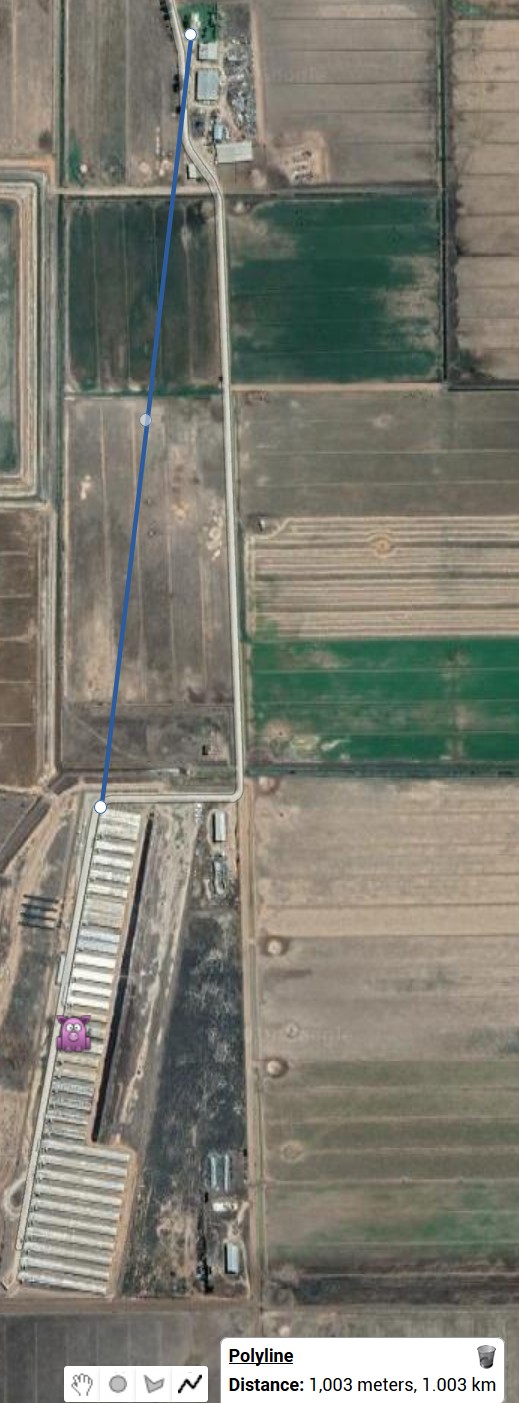
Figure 12: House located 1.003km from edge of piggery sheds.
ECONOMY
Given what we now know about the disastrous environmental effects of animal agriculture, it is essential that all Australian governments – state, territory and federal – invest urgently in packages to assist farmers in switching to more sustainable methods of income (e.g. crop or renewable energy farming). Delaying this will have a compounding negative effect on our economy, whereby greater amounts of money must be spent mitigating environmental damage that could have been avoided altogether.
Similarly, funds spent on public healthcare treating preventable diseases could be better spent if consumers were educated about the negative health effects of meat, dairy and eggs, and the comparative benefits of eating a plant-based diet.
The Gippy Goat Café
Much attention and criticism of activists in the media and political spheres has been focused on the closure of the Gippy Goat Café in Gippsland. It is important to note the following:
- Statements from ex-workers reveal that the owner of the facility, John Gommans, had been intending to close the café for several months prior to the protest action occurring, due to a lack of profitability. The protest action provided John with an opportunity to use “vegan activists” as a scapegoat.
- The multiple farms owned by John Gommans, including that on the same property as the café, and the nearby Cibus Goats facility at Trafalgar, remain fully operational. John’s company NuLac Foods (and associated brands Caprilac and Coach House Dairy) was the largest producer of goat milk products in Australia until its acquisition by Bubs Australia for $25million in December 2017, at which point John was appointed as a director of Bubs Australia, a position he still holds today. He also remains a director of Cibus Goats Pty Ltd, Uphamgo Australia Pty Ltd and New Zealand Nutritional Goat Company Limited. As of 30 June 2018, John owned over 19 million shares in Bubs Australia, a company with a net revenue that year of almost $17million. John’s farm Cibus Goats is the single largest goat dairy farm in Australia. It should be clear that John is not suffering financially by any means, and certainly not as a result of the protest action that occurred at the farm adjacent to the café.
- The two Gippsland farms owned by John – Gippy and Cibus – hold approximately 5500 milking goats, half of the total milking goats in Australia. All are forcefully impregnated each year to keep their milk flowing, as like humans and dairy cows, they must give birth in order to lactate. The male kids, who will never be able to produce milk and are therefore considered by John to be useless except for a minority who are raised for meat, and any females in excess of the farms’ needs, are bludgeoned to death with a sledgehammer on site. The milking goats are sent to a slaughterhouse when their milk production slows.
- The Gippy farm is reportedly plagued by Caprine Arthritis Encephalitis (CAE).
- John directly incited threats of death and violence towards the organiser of the protest action, Cara Garrett, by sharing her home address on the Gippy Goat Facebook page, after the police invited the managing director of Cibus Goats, Paul Cornelissen, to Cara’s house (see attachment A at the end of this document). A sample of these threats and otherwise abusive messages have been attached to the end of this document as Attachment B.
A statement from a former worker at one of John Gommans’ farms:
Okay so I'm not sure how much you guys are privy to from behind the scenes. I worked at [Cibus goat farm at Trafalgar] for several years before moving states. I stuck it out in horrendous conditions for so long because I love goats and myself and a few other workers did what we could to help the animals behind the scenes. I worked there before he opened the second farm and cafe, so things may be different now, but I wanted to share my experience.
Probably the biggest atrocity there is what happened to the male kids. Every day after the newborn kids were collected, the doe kids were put into pens to be raised, the males were put in a pen by the entrance to await the herdsman. Often hundreds of buck kids every day during kidding season- they were bludgeoned to death with a hammer to the head. It would often take the herdsman an hour or more to finish killing them. They were thrown into the tractor scoop and taken to the dead pit out the back of the barns. They were often still alive with their skulls crushed in, their eyeballs would pop out, and they were still thrown on the pile to suffer and die slowly . This was a daily occurrence for at least a decade, and I beleive probably still is.
I had my job threatened numerous times for objecting to it and for refusing to do it. We rescued and rehomed boys where we Could, but there was thousands over the years.
In one day in particular a shocking memory stands out in my mind. I got in to work and a doe kid had shattered her leg in the fence. It was beyond repair son asked if I could call the vet, I was refused and the herdsman said he'd go shoot her. We were milking so it was several hours later before we went over to the kid barn to do morning feeds. There she was on the ground where she'd been dragged and shot, I went to move her and to my horror she was still alive. She had a bullet hole in her head and was paralyzed, but still conscious. I stayed with her while another worker went to find someone to put her down, and during that time I got a video of her. I can try to find it on my old computer for you. It's truly horrific. That was actually what lead to finally leave, my heart just couldn't take it any more. I still have nightmares.
Another situation burned into my mind is the treatment of does struggling in labour. John was very specific about calling vets- we were not allowed to. One doe came in to be milked and was having issues kidding, she was clearly in labour but was noticeably in distress. She also smelt quite badly which indicated infection. She was separated to await help when the staff were free. The person who "helped" was inexperienced and upon pulling the kids (which were stillborn), He damaged her bladder. She needed proper vet care but we weren't allowed to call one. From that day on she leaked urine constantly and smelt so bad. She came into the sick herd every other week for a course of antibiotics, which of course does absolutely nothing for bladder damage- she needed to be uthenised but he wouldn't do it. She suffered for a further 8 months before finally dying of massive infection from the constant urine over her back end resulting in acidic burns and infected skin. She suffered so much for no reason. Because he said so.
In a daily basis tails were broken by careless staff twisting them (and goats absolutely have nerves and can feel their tails desire what morons say), goats that could not stand or were too slow were beaten, kicked, thrown, punched, every day. Not just occasionally but literally every day.
No matter how much an animal was suffering, like the goat with the damaged bladder, instead of letting them die in peace or getting them fixed he'd just continue to use them for milking until their bodies gave up and they died, the long horrible way- from outright neglect and abuse.
Broken legs were ignored if the doe was still producing milk. He'd make us keep them in the milking herd, force them to drag their broken limb along twice a day to be milked. All he cared about was that they were still making him money. After they stopped producing then he'd have them shot.
I once whittnessed a herdsman beat a full grown buck to death with a sledge hammer, because the boss didn't want to "waste a bullet".
I was once assaulted at work, pinned to the wall by my throat for stepping in stopping a worker beating a doe stuck in the mud. Nothing was done.
So basically I could go on all day. I'll get on my computer either tomorrow of the following day and try to find the video and photos for you.
Feel free to share my stories but ensure I remain anonymous please. If he knows it's me that's come forward I'm scared he might hurt my animals in Gippsland.
I find it ironic that Paul goes on about having to bottle raise two kids. They are ALL raised off feeders, except the lucky few visible to the public in the "petting zoo".
On CAE (Caprine Arthritis Encephalitis)
Yes they absolutely do have it rife throughout the herds. Whenever I rescued goats from there I always held them separately in quarantine and had bloods done, as if they tested for any diseases they could not join my herd, so I know for a fact that that farm has both johnies disease and CAE. CAE is transferred through the milk so to stop the spread a bred doe with it cannot be allowed to nurse her babies. It's a really awful disease.
INTERNATIONAL REPUTATION
Undoubtedly, the international reputation of Victoria and Australia more broadly is affected every time new footage emerges of animal cruelty in farms, slaughterhouses or other animal-use industries. Rather than implementing tighter laws around the capturing and publication of this footage, which demonstrates that there is something to hide, Victoria has an opportunity to be a world leader in supporting animal farmers to move to more sustainable, ethical methods of income, and investing in plant-based and/or lab-grown meat, dairy and egg alternatives. This would send a strong message that animal cruelty is not supported by the Australian government or the Australian people, and that real action is being taken to combat the climate emergency.
Animal Activists’ Compliance with the Prevention Of Cruelty To Animals Act 1986
Animal activists seek to save animals from unnecessary pain and suffering. The same cannot be said of farmers and slaughterhouse workers. Section 9 of the Prevention of Cruelty to Animals Act 1986 states:
(1) A person who—
(a) wounds, mutilates, tortures, overrides, overdrives, overworks, abuses, beats, worries, torments or terrifies an animal; or
(b) loads, crowds or confines an animal where the loading, crowding or confinement of the animal causes, or is likely to cause, unreasonable pain or suffering to the animal; or
(c) does or omits to do an act with the result that unreasonable pain or suffering is caused, or is likely to be caused, to an animal; or
(d) drives, conveys, carries or packs an animal in a manner or position or in circumstances which subjects or subject, or is likely to subject, it to unnecessary pain or suffering
commits an act of cruelty upon that animal and is guilty of an offence and is liable to a penalty of not more than, in the case of a natural person, 246 penalty units or imprisonment for 12 months or, in the case of a body corporate, 600 penalty units.
As a matter of daily routine, this section is blatantly violated on farms and slaughterhouses across Victoria and the entire country, however these violations are nullified by Section 6:
(1) This Act does not apply to—
(a) the slaughter of animals in accordance with the Meat Industry Act 1993 or any Commonwealth Act ; or
(b) except to the extent that it is necessary to rely upon a Code of Practice as a defence to an offence under this Act, the keeping, treatment, handling, transportation, sale, killing, hunting, shooting, catching, trapping, netting, marking, care, use, husbandry or management of any animal or class of animals (other than a farm animal or class of farm animals) which is carried out in accordance with a Code of Practice; or
(c) any act or practice with respect to the farming, transport, sale or killing of any farm animal which is carried out in accordance with a Code of Practice;
Given that there is no difference in the capacity to feel pain, fear, grief and suffering between “companion” animals (cats and dogs) and “livestock” animals, with pigs known to be at least as intelligent as dogs, the Act is clear that while routine, industry-standard practices on farms and in slaughterhouses are considered an “act of cruelty”, such cruelty is entirely legal when done to the latter group of species simply because of their commercial value. This is a grossly indefensible failure of our animal welfare laws, which through no coincidence is unknown to most consumers of animal products who are therefore unwillingly funding animal cruelty.
To suggest that activists, in attempting to relieve, free, or protect animals from what would be considered unacceptable and illegal cruelty if only those animals were cats or dogs, are breaching the Prevention of Cruelty to Animals Act, is so far beyond rational thought as to be absolutely ludicrous.
The POCTA Act must be updated to criminalise all animal cruelty, regardless of the victims’ designated “purpose”.
Incidences and Responses of Other Jurisdictions in Australia and Internationally
As there have been no instances of activists threatening biosecurity or the safety of farmers or their families, and as the act of trespassing and inciting others to commit crimes is already illegal, it can be surmised that the purpose of investigating new laws to target activists relates to the steady stream of footage and photographs which have been, for many years, a source of great embarrassment and reputation damage for industries that engage in commercialised animal cruelty, and the governments that support them.
Any laws enacted with the purpose of silencing whistleblowers and obfuscating industry activities fall squarely into the realm of “ag-gag”, where consumers are denied access to information or material that would enable them to make informed decisions about what they purchase and forcing them instead to rely only on what they’re told by the industry and government who, as we’ve seen time and time again, have no interest in showing the reality of modern farming and slaughtering.
Attempts to introduce ag-gag laws into numerous states in the US have, in most cases, been defeated before enactment or later ruled to be unconstitutional, and previous attempts to introduce them in Australia, or to misappropriate existing laws for such a purpose (e.g. charges brought against activists under the Surveillance Devices Act NSW for publishing piggery and slaughterhouse footage), have failed.
The Australian constitution contains an implied freedom of political communication. The relationship between this implication and the publishing of footage of animal cruelty was made clear in the High Court ruling against Lenah Game Meats in 2001, with Justice Kirby acknowledging that animal welfare issues are legitimate matters of public debate and noting the importance of public interest groups in raising awareness of these issues and of generating public debate in Australia:
“The concerns of a governmental and political character must not be narrowly confined. To do so would be to restrict, or inhibit, the operation of the representative democracy that is envisaged by the Constitution. Within that democracy, concerns about animal welfare are clearly legitimate matters of public debate across the nation. So are concerns about the export of animals and animal products. Many advances in animal welfare have occurred only because of public debate and political pressure from special interest groups. The activities of such groups have sometimes pricked the conscience of human beings.
Parliamentary democracies, such as Australia, operate effectively when they are stimulated by debate promoted by community groups. To be successful, such debate often requires media attention. Improvements in the condition of circus animals, in the transport of live sheep for export and in the condition of battery hens followed such community debate. Furthermore, antivivisection and vegetarian groups are entitled, in our representative democracy, to promote their causes, enlisting media coverage, including by the appellant. The form of government created by the Constitution is not confined to debates about popular or congenial topics, reflecting majority or party wisdom. Experience teaches that such topics change over time. In part, they do so because of general discussion in the mass media.”
Consumers should not be prevented or hindered by law from being informed about the animal welfare, environmental and health concerns relating to the consumption of animals.
Summary and Recommendations
The only way to prevent activists’ attempts to force transparency on the animal agriculture industry is for government to force that transparency. If there were to be honesty and openness around the cruelty involved, there would be no need for anyone to take it upon themselves to capture and publish evidence of it. It would be entirely in the hands of consumers to decide whether industries that abuse animals for profit have a social license to operate. As a minimum, this transparency would include:
- Publicly accessible CCTV live-streams inside all factory farms and slaughterhouses
- An open-door policy for any member of the public to see inside factory farms and slaughterhouses without advance notice (complying of course with all biosecurity protocols)
- Honesty in marketing and product labelling, with deceptive phrasing (e.g. “high welfare”, “humane”, “ethical”) banned, and descriptions of standard industry practices, environmental effects, and health effects printed on labels in the same manner as cigarette health warnings
- Honesty in education, informing school students of the harsh realities without pro-farming bias
A step further would be to criminalise cruelty towards “livestock” animals in the same way it is for “companion” animals (e.g. dogs and cats) by removing the exemption for farm animals in the Prevention of Cruelty to Animals Act: all animal cruelty should be illegal, regardless of the victims’ designated “purpose”. The sentience of farm animals, and their capacity to feel pain, fear, grief and suffering, should be recognised by law.
Given the animal agriculture industry’s heavy reliance on cruel practices, this would require a plan to assist livestock farmers to move into other areas of work (e.g. crop or renewable energy farming). At present, it can be difficult for farmers wishing to transition to more ethical and sustainable methods of income, as there is no government support available for this purpose.
As the effects of climate change increase – fueled rapidly by animal agriculture – and Australia’s population continues to grow, environmentally sustainable methods of producing food will become an absolute necessity. Investment must occur now into the research and development of these alternatives, to make it as easy as possible for farmers to shift out of animal agriculture.
Documenting evidence of cruelty without authorisation at farms and slaughterhouses carries extreme risks, including but not limited to:
- Criminal charges for trespass
- Civil litigation
- Violence from farmers, including the following known cases:
- An activist was shot at by a farmer while documenting cruelty at a Queensland feedlot in January this year
- An activist was punched in the face while sitting in their car on a public road, by a dairy farmer who then fired warning shots into the air, in February this year
- An activist was punched and then ran over by a sheep farmer in September 2018, causing a broken ankle which required surgery
- An activist being strangled nearly to death by a farmer at an egg farm in Victoria in 2017
- An activist having their leg broken by a farmer at an egg farm in Victoria in 2016
- Activists were “hunted” for several hours by eight NSW pig farm workers who had set a “trap” following the discovery of hidden cameras in 2013; while failing to catch the activists, they did find and destroy the activists’ car
- Hundreds of threats of death or violence directed at numerous activists. A sample of these threats and otherwise abusive messages has been attached at the end of this document as Attachment C.
No person should feel compelled to take on these risks due to a lack of industry transparency and accountability or due to the urgency demanded by immediate or inevitable suffering. Laws must be changed to protect animals from cruelty and violence in order to remove the need for civilian intervention. It is important to note that no charges have been laid against any of the farmers involved in the above instances despite clear evidence provided to the police. Police should be instructed to prosecute all cases of serious violence irrespective of whether the victim is an activist and the perpetrator a farmer, and to investigate all tangible threats of death or violence made by farmers towards activists. Media outlets promoting hate towards individual activists, such as The Weekly Times, should be held legally accountable.
In 2016, a Productivity Commission report suggested the current process for setting standards for farm animal welfare does not adequately value the benefits of animal welfare to the community. It suggested the process for setting standards would be improved through the creation of a statutory agency responsible for developing national farm animal welfare standards using rigorous science and evidence of community values for farm animal welfare.
These recommendations should be acted upon immediately to address the widening gap between consumer expectations and the reality of the industry. A 2019 report titled Australia’s Shifting Mindset on Animal Welfare commissioned by the federal Department of Agriculture and Water Resources found that the majority of Australians care about animal welfare, with 95% of respondents viewing farm animal welfare with concern and 91% wanting reform to address it.
I would welcome the opportunity to meet the committee in person to further discuss my submission and what can be done to reduce or altogether eliminate the commercialised abuse and suffering of animals in Victoria.
Attachment A: Statement to Police by Cibus Goats Manager
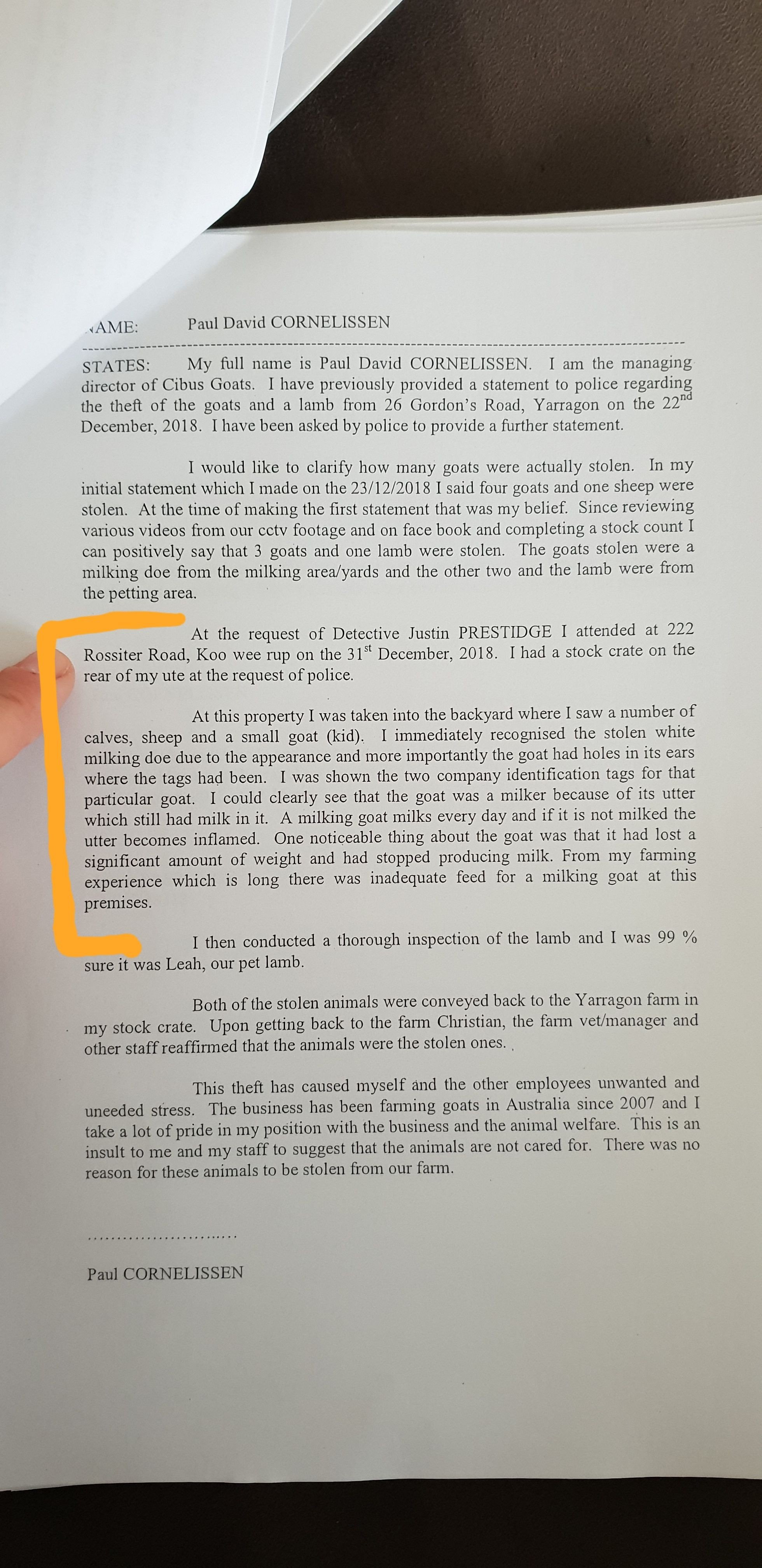
Attachment B: Messages to Cara Garrett
![]() PDF file: Messages to activist Cara Garrett
PDF file: Messages to activist Cara Garrett

 View as a PDF
View as a PDF